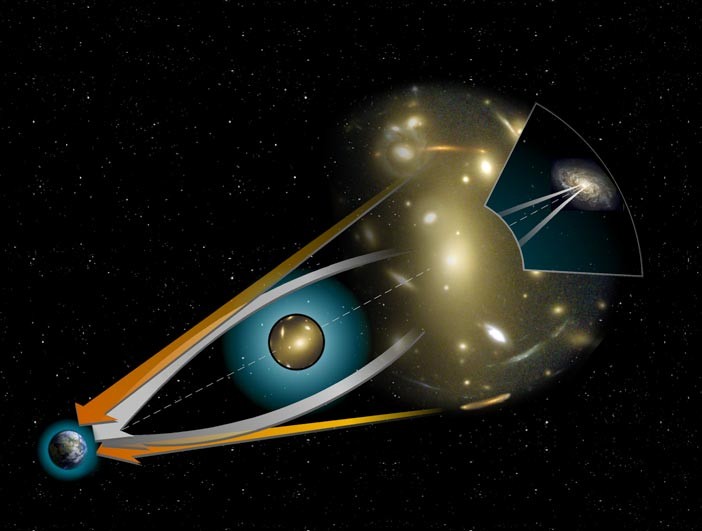
The Galaxy Zoo is coming to Palomar on Sunday night. If you are not familiar with the program here is a short introduction from their website:
The original Galaxy Zoo was launched in July 2007, with a data set made up of a million galaxies imaged with the robotic telescope of the Sloan Digital Sky Survey (SDSS). With so many galaxies, the team thought that it might take at least two years for visitors to the site to work through them all. Within 24 hours of launch, the site was receiving 70,000 classifications an hour, and more than 50 million classifications were received by the project during its first year, from almost 150,000 people.
Sunday night the 200-inch Hale Telescope will be used to follow-up on what some of the Galaxy Zoo team has discovered. Specifically, the team will be looking to confirm gravitational lens candidates. A gravitational lens is produced when the mass of an object, like a galaxy cluster, bends and magnifies the light of a more distant objects behind behind it. Here is an illustration to show how that happens:

By carefully studying how the light of the distant objects is bent/magnified/distorted it is possible to map out the distribution of matter and dark matter. For more information have a look at their Zooite Guide to Strong Gravitational Lenses.
From the research team observing at Palomar:
Through visual inspection of ~900,000 galaxies in the SDSS, Galaxy Zoo participants are discovering potential lens candidates at a prodigious rate. Our sample includes blue arcs and multiply imaged sources around early-type galaxies. The data will provide key constraints on the dynamics and mass distribution of both luminous and dark matter in a large sample of intermediate redshift elliptical galaxies.The Zoo project also running The Hunt For Supernovae which is helping to discover supernovae and transients first photographed with Palomar's Samuel Oschin Telescope via the Palomar Transient Factory project. Head on over to check it out.



No comments:
Post a Comment